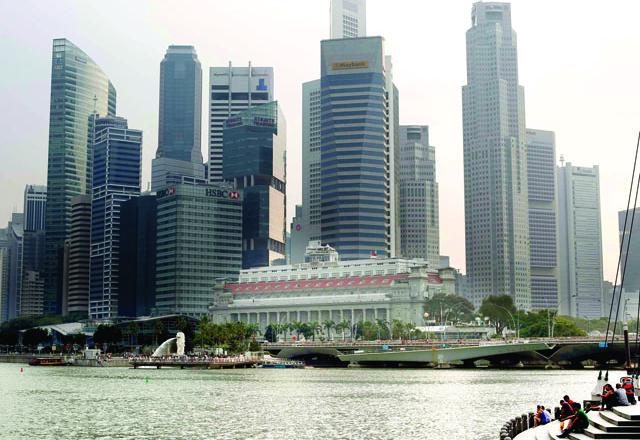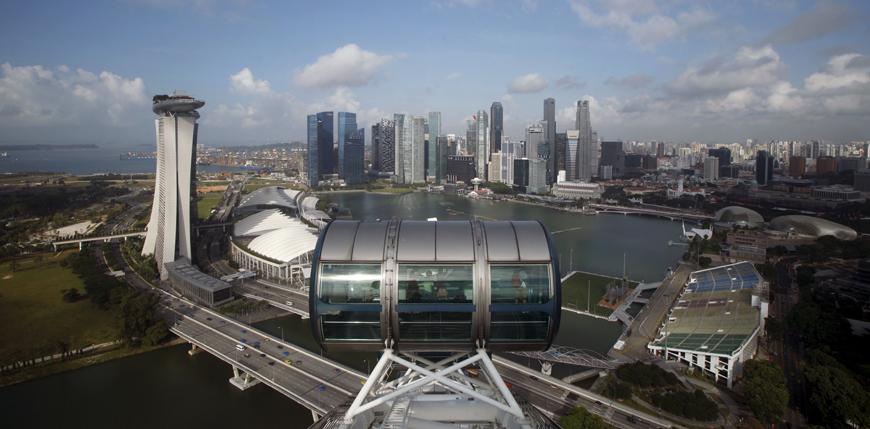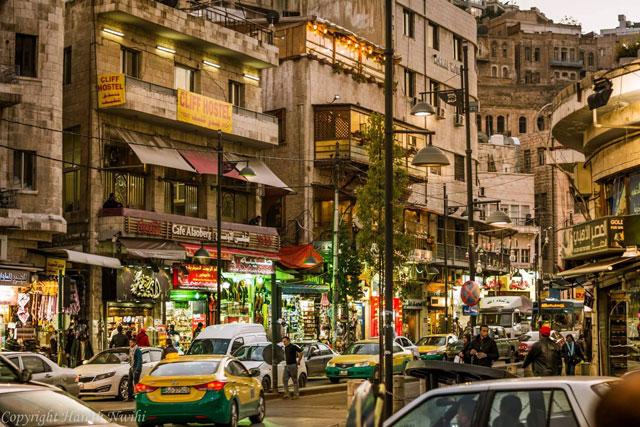You are here
Singapore boots out Tokyo as world’s priciest city for expatriates — EIU
By Agencies - Mar 04,2014 - Last updated at Mar 04,2014

SINGAPORE — The soaring cost of cars and utilities as well as a strong currency have made Singapore the world’s most expensive city, toppling Tokyo from the top spot, according to a survey published on Tuesday.
Tokyo’s weakening yen saw it slide to sixth place, the position previously occupied by Singapore, in the 2014 Worldwide Cost of Living survey by the Economist Intelligence Unit (EIU).
“Singapore’s rising price prominence has been steady rather than spectacular,” said a report accompanying the survey by the research firm.
It said a 40 per cent rise in the Singapore dollar along with “solid price inflation” pushed the country to the top of the twice-yearly survey from 18th a decade ago.
The survey, which examines prices across 160 products and services in 140 cities, is aimed at helping companies calculate allowances for executives being sent overseas. The calculations are based on the cost of living in US dollars.
The report added that Singapore’s curbs on car ownership, which include a quota system and high taxes, made it “significantly more expensive than any other location when it comes to running a car”.
A new Toyota Corolla Altis costs $110,000 in Singapore compared to around $35,000 in neighbouring Malaysia.
Overall transport costs in Singapore are almost three times higher than those in New York, it remarked.
“In addition, as a city-state with very few natural resources to speak of, Singapore is reliant on other countries for energy and water supplies, making it the third most expensive destination for utility costs,” the report indicated.
It pointed out that Singapore is the priciest place in the world to buy clothes, as malls and boutiques in its popular Orchard Road retail hub import luxury European brands to “satisfy a wealthy and fashion-conscious consumer base”.
Singapore has one of the world’s highest concentrations of millionaires relative to its 5.4 million population. Its per capita income of more than $51,000 in 2012 masks a widening income gap between the richest and poorest.
In Europe, Paris rose six places to become the world’s second most expensive city, a trend the EIU saw as indicative of recovering European prices and currencies.
“Improving sentiment in structurally expensive European cities combined with the continued rise of Asian hubs means that these two regions continue to supply most of the world’s most expensive cities,” Jon Copestake, editor of the report, which looks at over 400 individual prices, said in a statement.
“But Asian cities also continue to make up many of the world’s cheapest, especially in the Indian subcontinent,” he added.
According to the report, European cities were among the priciest in the recreation and entertainment categories, reflecting “a greater premium on discretionary income”.
New York, which serves as the base city for the survey, was ranked 26th, while Sydney and Melbourne came in at fifth and sixth respectively owing to a strong Australian dollar.
Caracas was tied at sixth with Melbourne, Geneva and Tokyo, but the EIU attributed the Venezuelan capital’s position to the imposition of an artificially high official exchange rate.
“If alternative black market rates were applied Caracas would comfortably become the world’s cheapest city in which to live,” it said.
Mumbai was the least expensive major city in which to live, partly due to government subsidies on some products and low local wages, followed by Karachi, New Delhi and Damascus as the fourth-cheapest, which EIU said reflected the weakening of the Syrian pound due to the country’s civil war. Kathmandu came at the bottom of the pile.
The five most expensive cities were judged to be Singapore, Paris, Oslo, Zurich and Sydney in descending order. Caracas, Geneva, Melbourne and Tokyo were tied at sixth place while Copenhagen was 10th.
London was ranked 15th most expensive city.
Related Articles
SINGAPORE — Yo-yoing currencies, spiralling inflation and plunging commodity costs are shaking up the rankings of the world's most expensive
AMMAN – Jordan ranked 65th globally in terms of the average net salary, with the monthly income standing at around $637, according to Numbeo
AMMAN — Amman was ranked as the most expensive city in the Arab world, according to the Economist Intelligent Unit, as economists differed o



















